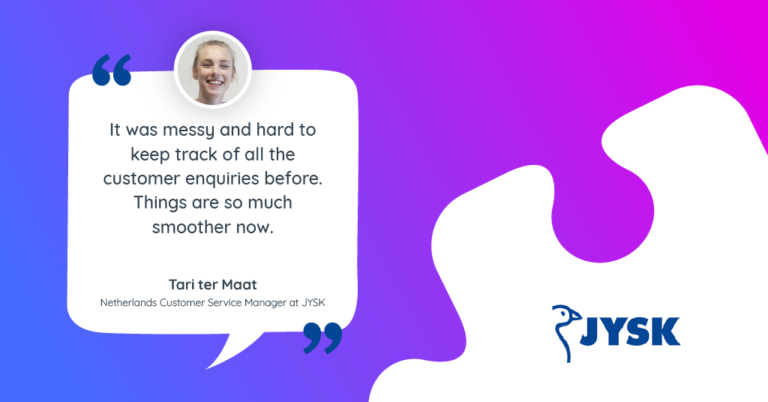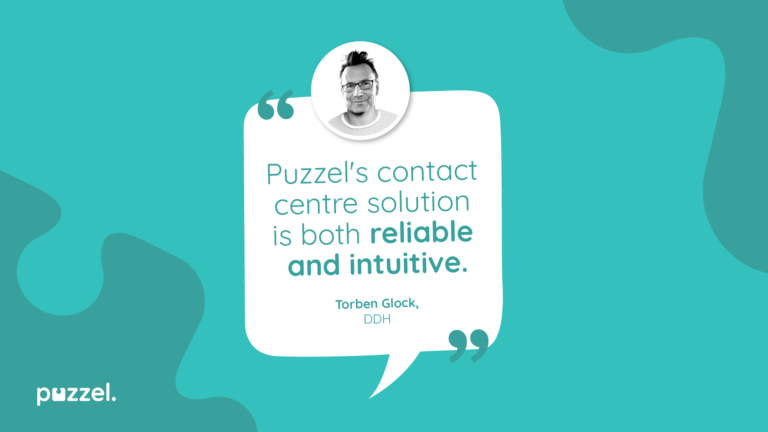With so much attention placed on customer experience in the contact centre, the needs of agents can often get overlooked.
But agent experience is so tightly tied to customer experience that it’s impossible to successfully deliver one without the other.
Below are five statistics that demonstrate just how important agent experience is to achieving customer satisfaction and reducing operating costs.
(And if you need a refresher on what agent experience is, check out our blog series here.)
1. Happy agents are 3x as likely to feel empowered to resolve customer issues
Customers are becoming increasingly comfortable using chatbots and other online self-service tools to resolve simple enquiries. That means contact centre agents are now handling more high-value interactions, which are more difficult to resolve.
However, research by McKinsey shows agents who are happy and engaged are 3.3x more likely to feel empowered to resolve these issues [1]. So to deliver the best possible service for your customers, you need to provide the best possible experience for agents.
McKinsey’s research found agents are most happy when they believe in their company’s mission, feel a strong sense of belonging, are given clear opportunities for progression, and a manageable workload. This can be achieved by holding regular team huddles, doing team-building exercises, introducing specialisms, and using technology, such as robotic process automation (RPA) and workforce management (WFM), to streamline operations and ensure your operation is always properly staffed.
2. Contact centres lose 20% of their staff every year
The average contact centre loses around 20% of staff every year, according to the Global Call Centre Research Network [2]. This stat includes promotions, voluntary quits, retirements and dismissals.
Of those who choose to leave their job, the most common reasons include excessive pressure or stress, low pay, high staff turnover, repetitive work, and a lack of promotion or career development opportunities.
While occasional staff turnover can be beneficial for your business, as it brings new blood and enthusiasm into your team, frequent staff turnover can have serious consequences for your contact centre. These include low quality of service for customers, high stress for managers, low morale among agents, and high recruitment and training costs. According to the Global Call Centre Research Network, it costs about two months’ worth of a typical worker’s pay to replace one worker. If lost productivity is taken into account, this increases to three to four months.
Improving your agent experience can therefore help improve engagement and minimise churn.
3. 68% of customers expect brands to demonstrate empathy, but just 37% receive it
While chatbots and self-service channels are growing in popularity, customers today still want a human touch.
Salesforce’s latest State of the Connected Customer report shows 68% of customers expect brands to demonstrate empathy and 66% expect them to understand their unique needs and expectations. However, just 37% of customers believe they are shown empathy and even less feel they are treated as unique individuals [3].
So even as contact centres become more digitised and automated, human agents will continue to play an important role in building, maintaining, and repairing relationships with customers. They are vital for delivering the empathy customers crave, but can only do so when they’re supported with the right tools, training and environment.
Investing in technology, such as Agent Assist, Speech Analytics and Sentiment Analysis, and in emotive CX or emotional intelligence training, will give your agents the best chance to deliver positive outcomes.
4. Contact centre agents use an average of 8.2 different systems and tools to resolve customer interactions
Customers today expect fast, seamless service across all customer service channels, from voice to email, video, web chat and more. But when you have multiple systems for multiple channels, plus a separate CRM, chatbot solution, knowledgebase and instant messaging software, customers and agents can very quickly get tied in technical knots!
A survey of more than 2,000 frontline agents conducted by Gartner in 2018 found contact centre agents used an average of 8.2 different systems and tools every day to resolve customer enquiries. Not surprisingly, just 16 per cent said their tools actually helped them handle customer issues [4].
“Leaders have heavily invested in technology to boost the service experience, but have unwittingly hampered the rep experience by doing so. Reps find that the technology they’re using to provide top-notch customer service is actually inhibiting their ability to deliver that outcome,” Gartner’s VP, Peter Slease, said. “Leaders should shift their attention from a laser-focus on improving the customer service experience to improving the rep experience, especially as it relates to the systems and tools that they use.”
Multiple systems slow down agents, create silos, and require customers to repeat information over and over again. A contact centre solution that provides everything agents need in one, unified application can help you overcome these challenges.
5. By 2022, 45% of the global knowledge workforce will work from home two to three days per week
The future of work is likely to be hybrid — with more employees wanting flexible working in the wake of the pandemic. According to Gartner, 45% of the global knowledge workforce will be working from home two to three days per week by 2022. Nearly one in five will work remotely all the time [5].
This aligns with the findings from our Evolution of the Contact Centre research initiative with the Call Centre Management Association (CCMA), which show more contact centres are moving to hybrid working models after the pandemic [6].
While hybrid working will bring many benefits for contact centres, it will also bring challenges, including keeping agents engaged, motivated, and connected with their teams and the wider organisation. Providing a smooth and stimulating agent experience will become critical to maintaining productivity and retaining talent.
Puzzel’s cloud contact centre solution is engineered to deliver the best agent experience and customer experience. Contact us today for a free demo.
[2] https://ie.technion.ac.il/~serveng/course2004/References/GCC%20Report%2020-04-07%20UK%20Version.pdf













 United Kingdom
United Kingdom  Danmark
Danmark  Sverige
Sverige  Norge
Norge  Finland
Finland